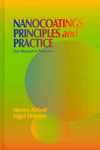SAARBRUCKEN, Germany - Large quantities of steel are used in architecture, bridge construction and shipbuilding. Structures of this type are intended to be long lasting. Even in the course of many years, they must not lose any of their qualities of strength and safety. For this reason, the steel plates and girders must have extensive and durable protection against corrosion. In particular, the steel is attacked by oxygen in the air, water vapor and salts. Various techniques are used to prevent the corrosive substances from penetrating into the material. One common method is to create an anti-corrosion coating by applying layers of zinc-phosphate. Now, research scientists at INM – Leibniz Institute for New Materials developed a special type of zinc-phosphate nanoparticle. In contrast to conventional, spheroidal zinc-phosphate nanoparticles, the new nanoparticles are flake-like. They are 10 times as long as they are thick. As a result of this anisotropy, the penetration of gas molecules into the metal is slowed down.
“In first test coatings, we were able to demonstrate that the flake-type nanoparticles are deposited in layers on top of each other thus creating a wall-like structure,” explained Carsten Becker-Willinger, Head of Nanomers® at INM. “This means that the penetration of gas molecules through the protective coating is longer because they have to find their way through the cracks in the wall.” The result, he said, was that the corrosion process was much slower than with coatings with spheroidal nanoparticles where the gas molecules can find their way through the protective coating to the metal much more quickly.
In further series of tests, the scientists were able to validate the effectiveness of the new nanoparticles. To do so, they immersed steel plates both in electrolyte solutions with spheroidal zinc-phosphate nanoparticles and with flake-type zinc-phosphate nanoparticles in each case. After just half a day, the steel plates in the electrolytes with spheroidal nanoparticles were showing signs of corrosion whereas the steel plates in the electrolytes with flake-type nanoparticles were still in perfect condition and shining, even after three days. The researchers created their particles using standard, commercially available zinc salts, phosphoric acid and an organic acid as a complexing agent. The more complexing agent they added, the more anisotropic the nanoparticles became.
INM – Leibniz Institute for New Materials, situated in Saarbrücken, Germany, is an internationally leading center for materials research. It is an institute of the Leibniz Association and has about 220 employees.




Report Abusive Comment